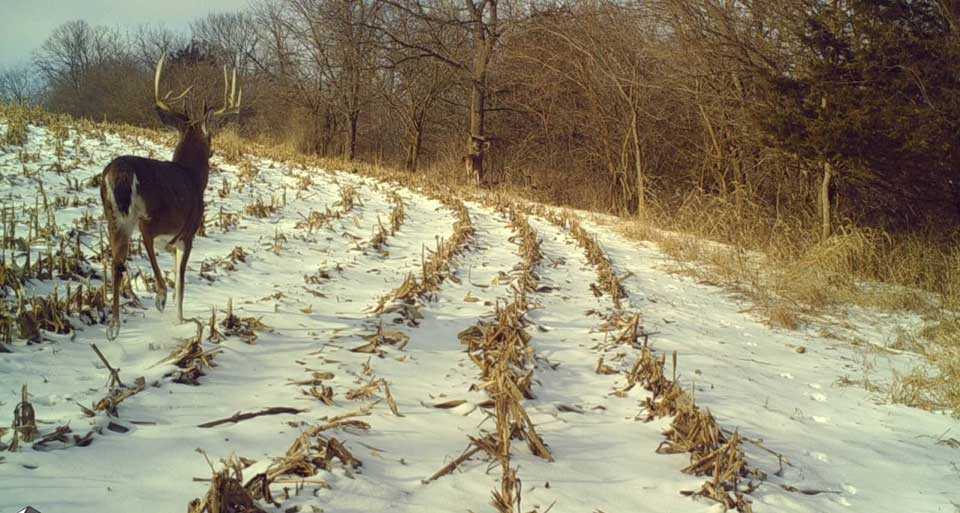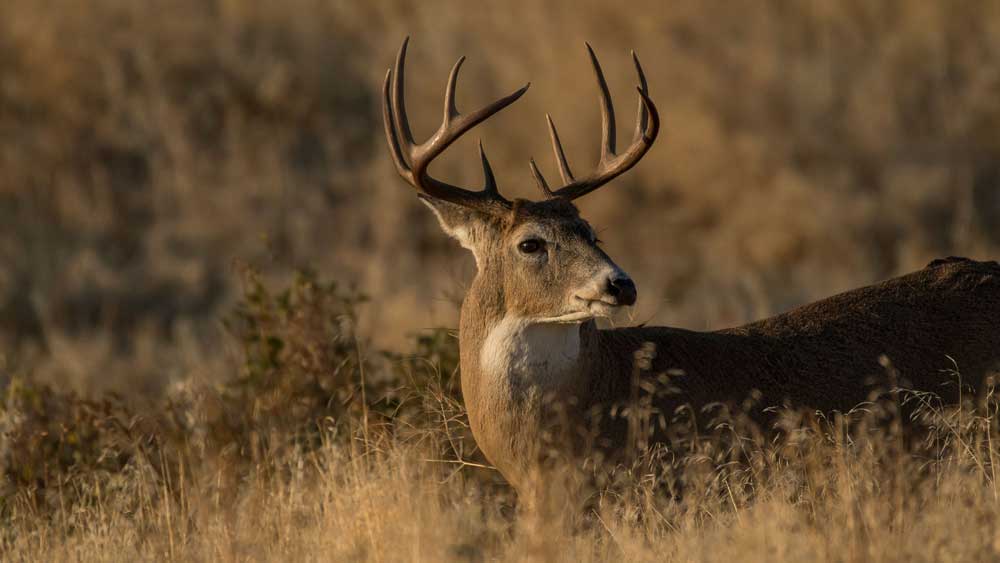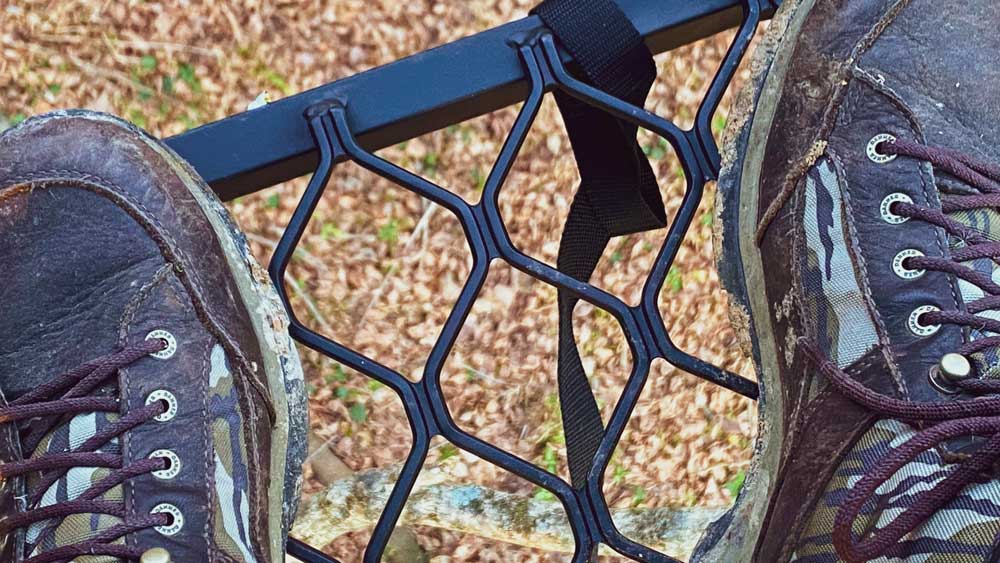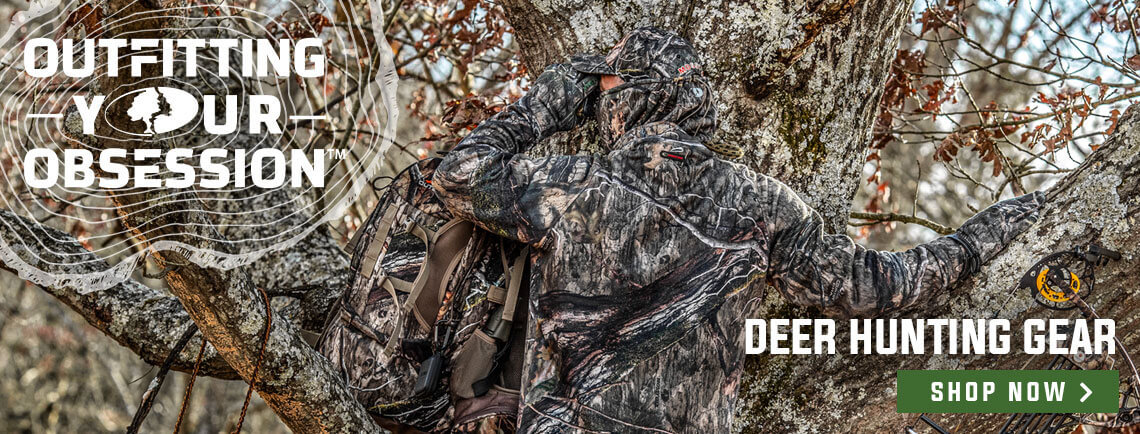Brodie Swisher
Some hunters look at the final days of the deer season with little optimism, and even find themselves struggling with desire to stay in the game. However, the late season can be a great time to notch a tag before the last days wrap up. Check out the tactics below for a look at how to make it happen.

Less Hunting, More Scouting
Much like when scouting prior to the season opener, the trail camera can once again be your best friend when it comes to locating the deer you’re after in the post-rut and late season. Your scouting recon at this time will enable you to narrow down the search and figure out what ground you need to be hunting. And while we’d all like to be spending more time in the stand, less can be more at this time of the year.
Yes, it’s hard to sacrifice time in the tree stand, but the hunter that’s willing to spend more time scouting than actually hunting is likely to experience far greater shot opportunities when they do finally climb in the tree. Late season hunting is a very strategic game. Don’t just make random sits at this time. Do your homework. Spend the time scouting to know where you need to be, and the opportunity to punch your deer tag will follow.
Relocate the Survivors
Part of the scouting process for the post-rut and late season deer hunting is to relocate the survivor bucks on the properties you’re hunting. The rut can be tough on the herd, and depending on how hard your neighboring farms are hunted, your target buck may, or may not, still be roaming the woods. Now is the time to take inventory and relocate the surviving shooter bucks. Chances are these bucks will have made a shift following the rut as they adjust to hunting pressure in the woods.
Keep in mind, relocating your buck may also mean having to relocate some of your stands as you transition to the post-rut and late season tactics. Staying mobile can be a huge advantage as you gather intel and make your move to ambush your buck.

Find the Hot Food Source
Your search to relocate the surviving bucks is best started by locating the hot food sources on the properties you hunt. When bucks wrap up their chasing efforts following the rut, they’ll transition back to focusing on food. Bucks will be worn down, slim in size, and in need of nourishment. Refueling will be the key focus of a buck at this time.
Green plots can be a hot ticket for bucks at this time, as well as agriculture fields with leftovers readily available. In the timber, you can typically find deer picking up red oak acorns, as they tend to last longer without rotting than the popular white oaks from the early season.
Make a Push
Some call it a deer drive, others refer to it as making a push. Either way, it can be a great tactic for making something happen in the late season. Deer drives in my early days of hunting were always a late season endeavor to shoot does for herd management and to fill the freezer. But the push can also be an excellent means of filling your buck tag as well. In fact, one of my best bucks came from a push made years ago with some hunting buddies in the late season.
The push is an old-school tactic that doesn’t get much attention these days, but the fact is, it works. The key is to be strategic, bump lightly, and know your escape routes. It’s a ton of fun and a great way to change up the game in the late season.

Catch a Buck Hiding Close By
A lot of hunters fall for the myth of thinking you have to walk miles and miles into the big timber to find a deer that’s not been pressured by the time the late season rolls around. However, the truth is there will be bucks hanging out close by that continue to fly under the radar in the late season as well. Sure, walking deep can pay off with a shot at a big buck. But you might be surprised at the number of deer hanging out within sight of the road, or out behind the barn.
Deer have a knack for adapting to overlooked areas that most hunters walk right past. Watch for deer beds and sign within close proximity to the parking lot, behind the house, or just off the road or trail. They’ll often watch you walk or drive right past without ever moving a muscle.
Conclusion
Don’t quit now if you’ve still got a deer tag in your pocket. The late season will typically find deer becoming patternable once again, allowing you the chance to scout, plan, and execute on the deer you’ve been looking for all season. Late can still be great! Get out there and make it happen.




























